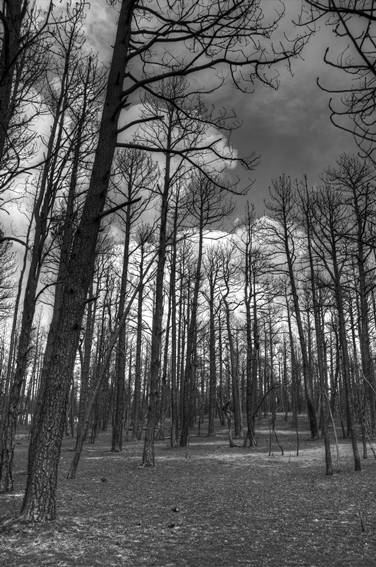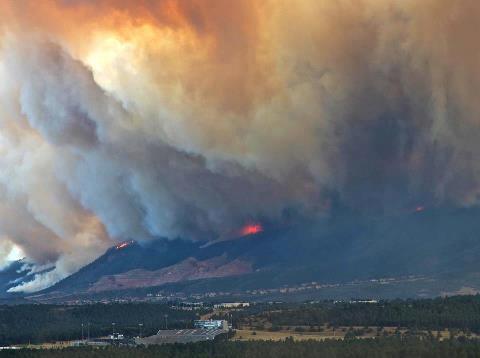Three firefighters injured in South Carolina
Three firefighters were injured while fighting a 12-acre wildfire that spread to a structure in Florence County, South Carolina late Wednesday afternoon. One firefighter suffered second and third degree burns to his face and neck while suppressing fire in a mobile home.
wistv.com – Columbia, South Carolina |
Arizona Forestry Division outlines changes for 2014
According to an article at KNAU, Arizona State Forester Scott Hunt told reporters on Wednesday:
“Our first priority is firefighter and public safety. And it’s always going to be our first priority,” he said.
But, Hunt did say that he expects when there is an initial report of a fire that there will “heavier responses” than in the past.
On June 30, 2013, 19 firefighters were killed on the Yarnell Hill Fire which was being managed by the Arizona Forestry Division.
Los Alamos National Laboratory under pressure to move radioacitve waste before wildfire season
From TheState.com:
Los Alamos is under a tight deadline to get nuclear waste off its northern New Mexico campus before wildfire season peaks, and the New Mexico dump [temporarily closed due to a fire] is the federal government’s only permanent repository for waste from decades of nuclear-bomb building.
Aerial firefighting training for California National Guard

Helicopter units of the California National Guard are scheduled to conduct their annual aerial firefighting training Friday through Sunday at the CAL FIRE academny in Ione.
Colorado Senate passes funding bill for aerial firefighting
The Colorado state Senate on Thursday passed a bill that would provide $21 million for a portion of the aerial firefighting program recommended by the Colorado Firefighting Air Corp (CFAC) in a report the agency released on March 28. The funds would enable contracting for four helicopters, four Single Engine Air Tankers, and the purchase of two fixed wing aircraft for fire detection and remote sensing, but not for the two large air tankers called for in the report.
Colorado Governor John Hickenlooper, who has been quoted as saying farmers and ranchers should be the state’s first defense against wildfires, is opposed to spending the additional $11.9 million for contracting for two large air tankers.
Wildfire season begins early in Russia
From ITAR-TASS:
Forest fires have broken out early in a season dubbed “tense this year”, Minister of Natural Resources Sergei Donskoi told a conference chaired by Prime Minister Dmitry Medvedev and addressing preparations for difficult days ahead.
“The situation is tense in Russia this year. Because of low precipitation, the season has begun almost 1.5 months ahead of the norm,” the minister said. Seventeen fires have already been registered across a territory of 2,000 hectares, the minister said.
Citing reasons for danger, the minister noted an early spring and a shallow layer of frozen soil. This was only 40-50% of normal levels and was leaving dry surface soil.
The Ministry of Natural Resources has adopted an inter-regional fire prevention plan employing an additional 3,000-strong contingent of firefighters, 800 units of firefighting equipment and 4,000 fire extinguishers, the minister said.


